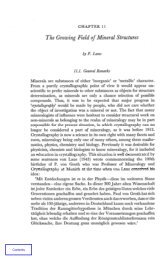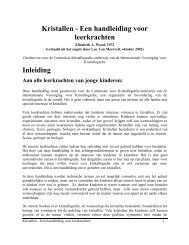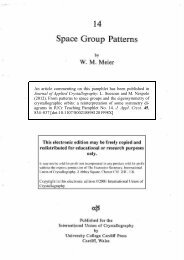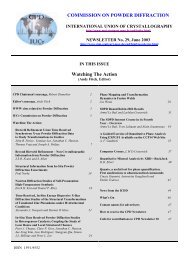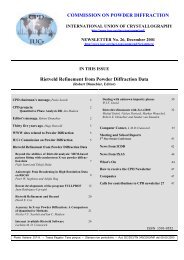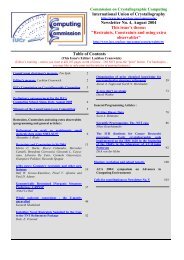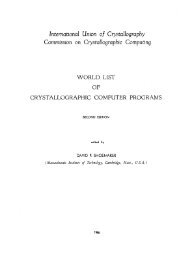EXCURVE My data analysis strategy
EXCURVE My data analysis strategy
EXCURVE My data analysis strategy
Create successful ePaper yourself
Turn your PDF publications into a flip-book with our unique Google optimized e-Paper software.
1. shell <strong>analysis</strong><br />
2. Consider available information<br />
Introduce central atom and potential<br />
ligands:<br />
Change Atom1 Cu; C Atom2 O; C<br />
Atom3 N; C Atom4 C<br />
Define a starting model ZnO n N m S 0<br />
(or better check a variety of<br />
models):<br />
Change ns 2 (ns: Number of shells)<br />
Change n1 2; C t1 O<br />
C n2 2; c t2 N (t: element type)<br />
Starting values for distance and<br />
disorder (Debye-Waller factor):<br />
C r1 2.00; c a1 0.008<br />
C r2 2.00; c a2 0.008<br />
Define starting model for first shell:<br />
Typical element types in biological<br />
samples: O,N,S<br />
Total number of ligands: 2,3,4,5,6<br />
Ratio of ligands: e.g. ZnO n N m S k<br />
Correlate Debye-Waller parameter<br />
for different shells ( e.g. a[1,3]<br />
links Debye-Waller factor for<br />
1.shell and 3shell)<br />
NOTE on Debye-Waller factor:<br />
Excurve uses 2 σ 2<br />
Feff uses σ 2<br />
Wolfram Meyer-Klaucke | IUCR | August 22 nd , 2011 | Page 12




